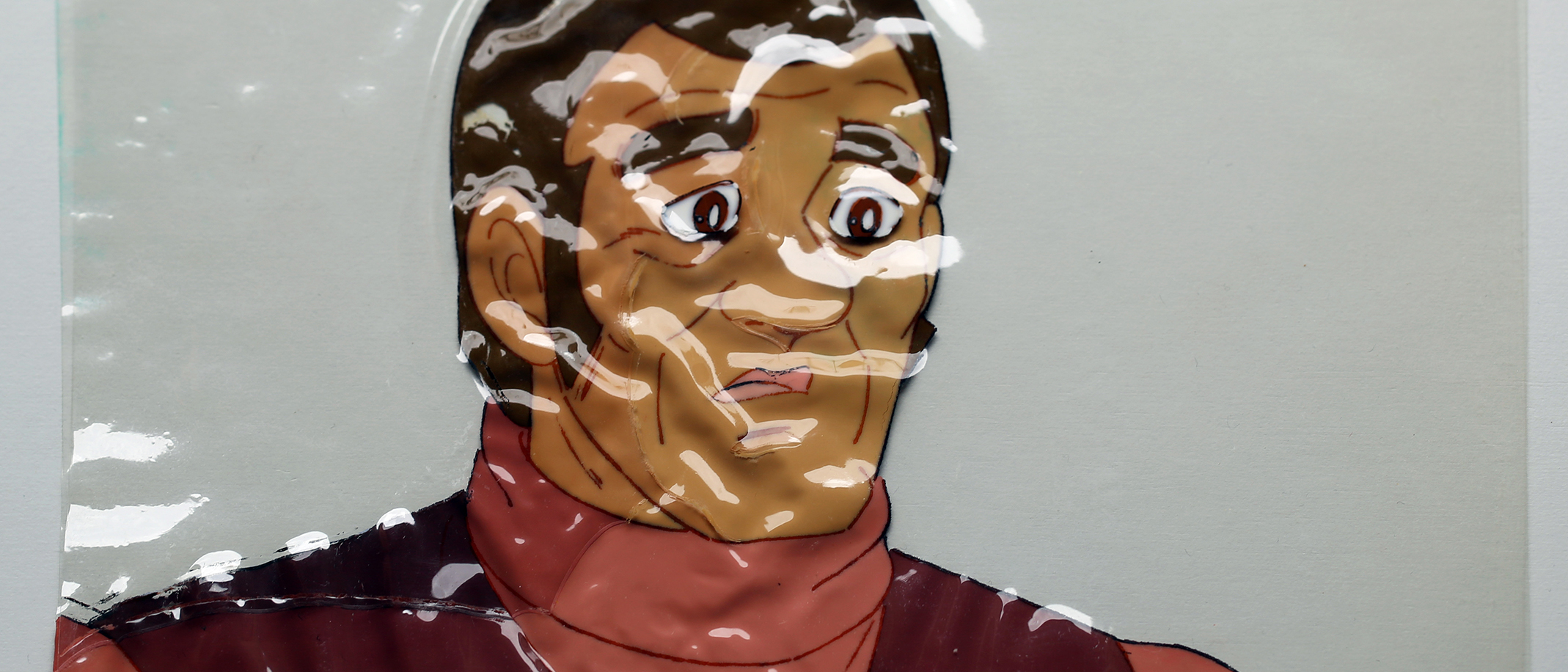
Vinegar Syndrome detection
In our conservation facility, by using our custom laboratory cabinet , we can detect and measure with precision if a cel is affected by the vinegar syndrome and at which phase of the reaction the cel actually is. But at home, it is also possible to guess if your cel has the vinegar syndrome, simply by using your nose. When you take out your cel from its plastic envelope/portfolio and smell a vinegar smell, Even a very, very light smell, well… your cel is probably affected by the vinegar syndrome or it will be affected in a very short period of time.
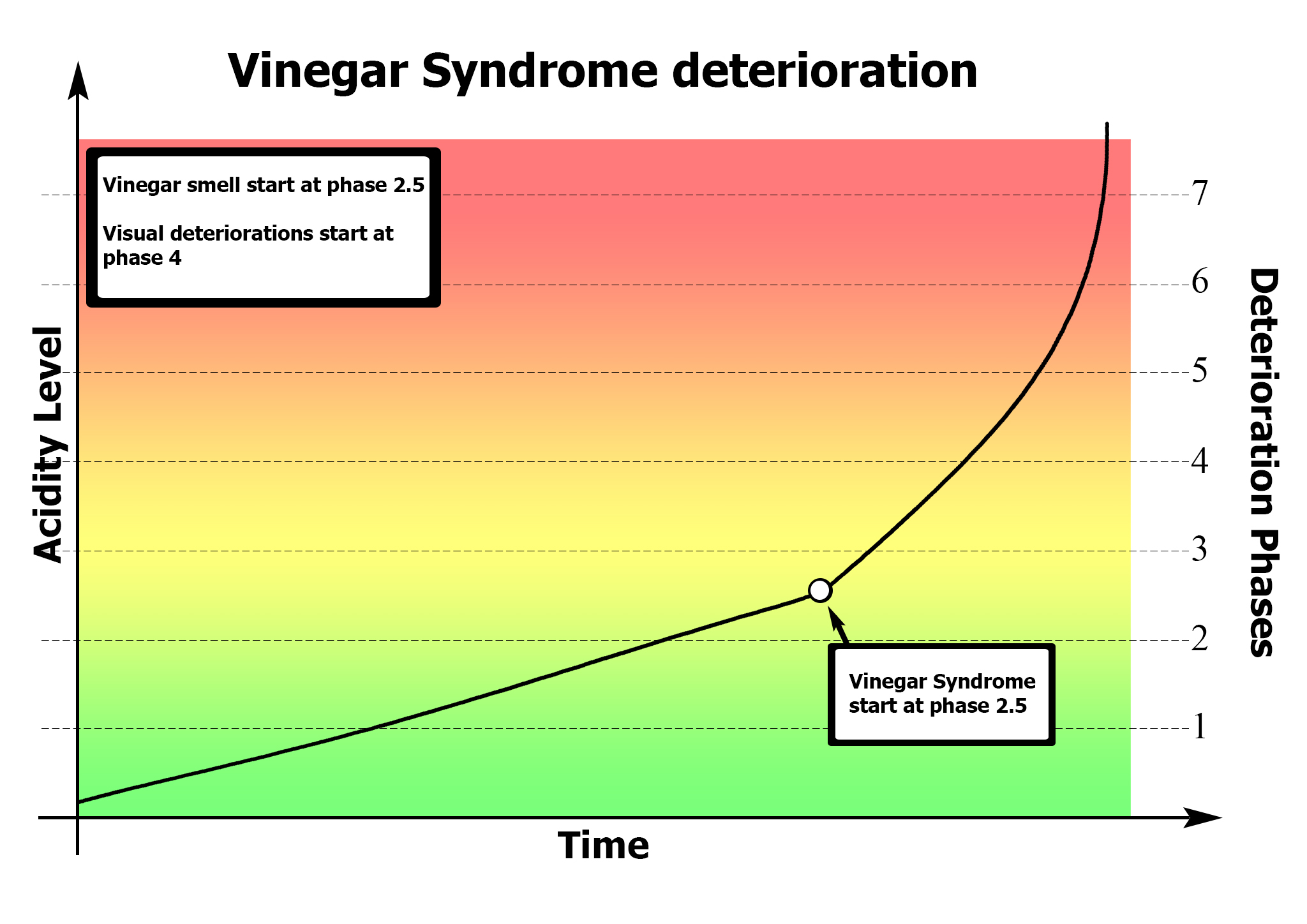
The 7 phases of the vinegar syndrome
- Phase 1 : No vinegar smell at all, and no visual deterioration. the vinegar syndrome reaction hasn’t started yet.
- Phase 2 : Very light vinegar smell that can be detected by human nose, and no visual deterioration yet.
- The vinegar syndrome start between phase 2 and 3 (phase 2.5)
- Phase 3 : Light vinegar smell, and no visual deterioration yet.
- Phase 4 : Stronger vinegar smell, with possible light undulation waves on the layer and/or the layer which start to lose its transparency (yellowing) with possible oily liquid and/or white crystal deposits appearing on the surface.

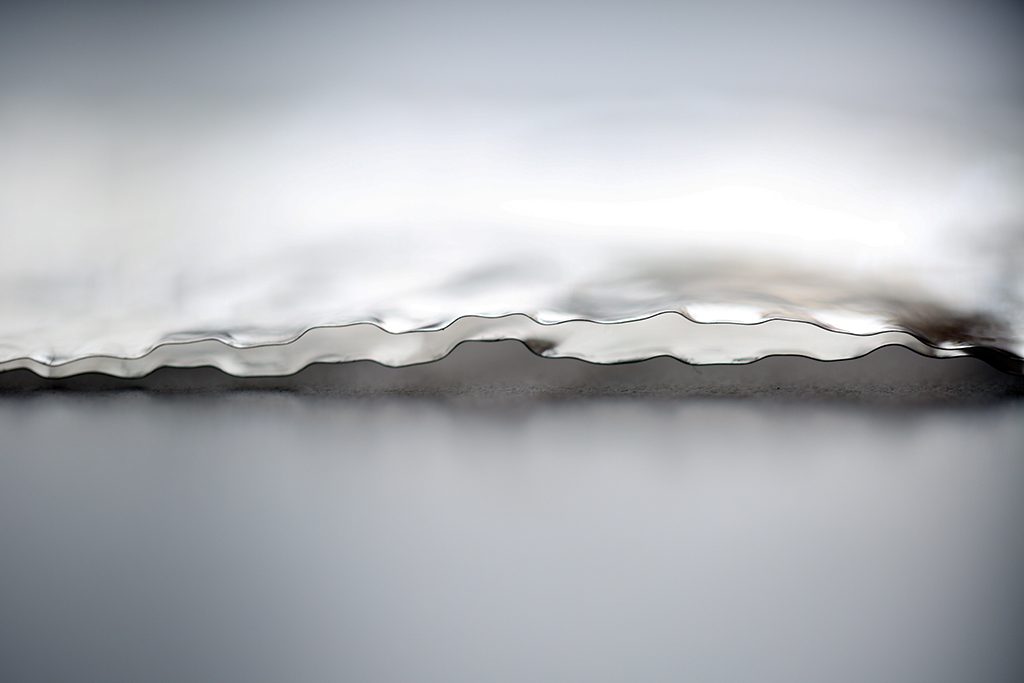
- Phase 5 : Intense vinegar smell , with a little bigger undulation waves on the layer
and/or the layer which lose significantly its transparency (yellowing) with possible oily liquid and/or white crystal deposits appearing on the surface.

- Phase 6 : Very intense vinegar smell, with bigger undulation waves on the layer
and/or the layer which lose significantly its transparency (yellowing) with possible oily liquid and/or white crystal deposits appearing on the surface.
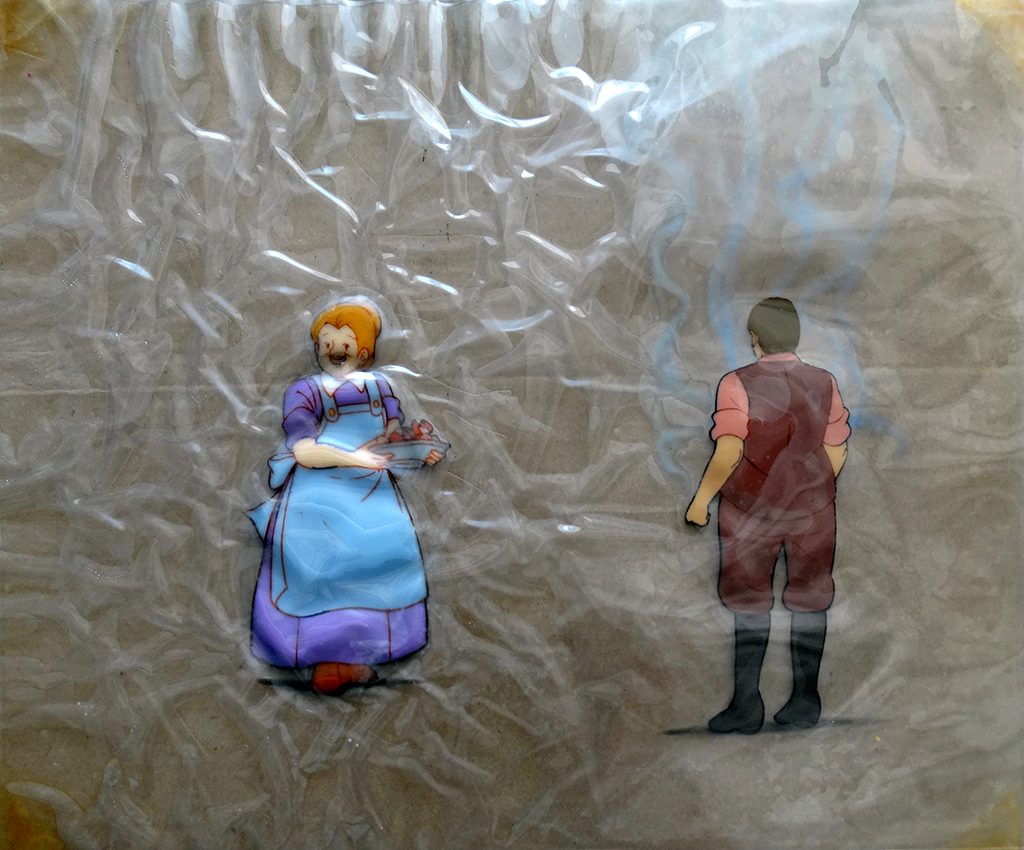
- Phase 7 : Very intense vinegar smell, with very big undulation waves on the layer and/or the layer which lose significantly its transparency (yellowing) with possible white crystal deposits on the surface of the layer.
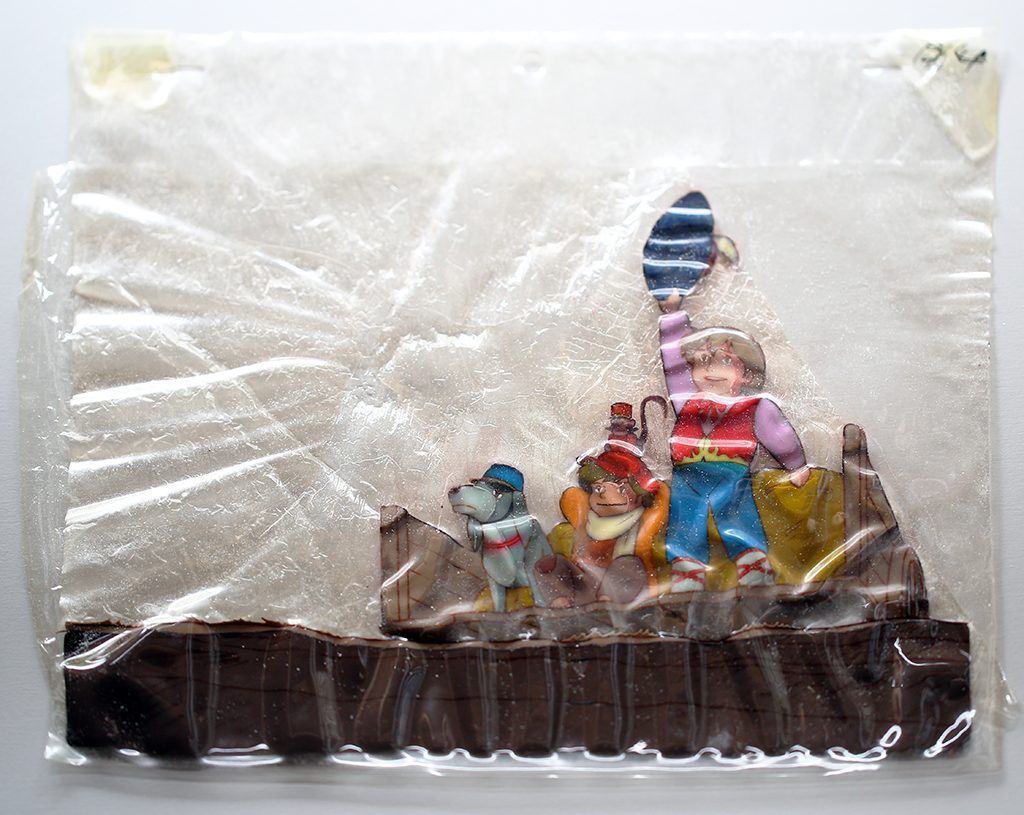

Other visual symptoms of Vinegar Syndrome
During our research on the vinegar syndrome, we have discovered that other visual variations exist of this syndrome that don’t necessarily look like the common vinegar syndrome… Indeed we often associate the vinegar syndrome to the smell of vinegar and most of the case it’s true, but actually the vinegar smell has to be considered more like one of the “symptom” of the vinegar syndrome.
As said previously, a cel during its life will always release some acetic acid in the air. If the cel is kept in a plastic envelope or a portfolio , the acid will accumulate in this confined environment and when you open the envelope/portfolio this concentrated gas will be released in the air so a human nose will smell the vinegar odor. But if a cel is kept in a well ventilated zone, the very small amount of acid acetic that the cel releases will be diluted in the air instantly , making it nearly impossible for a human nose to detect it. but it doesn’t necessarily mean that your cel is not contaminated… There exists different other forms of visual symptoms that are signs of vinegar syndrome even if the cel doesn’t smell vinegar…
Oily liquid substance on the layer surface of a cel.
This Oily liquid is actually the plasticizer of the cel, a substance that is added inside the acetate of cellulose during the manufacturing process to make the “plastic” layer flexible. This plasticizer is captured inside the layer with the acetic acid and when the acetic acid is released outside the cel layer, it pushes away with it the plasticizer that now appears on the surface of the cel layer.
It is very hard to clean completely this plasticizer liquid on the surface of a layer, but it seems that it is not harmful for the cel, it just make the cel looks bad. But if you see this oily liquid, it means that the vinegar syndrome reaction has already began. Even if you don’t smell any vinegar odor on your cel.
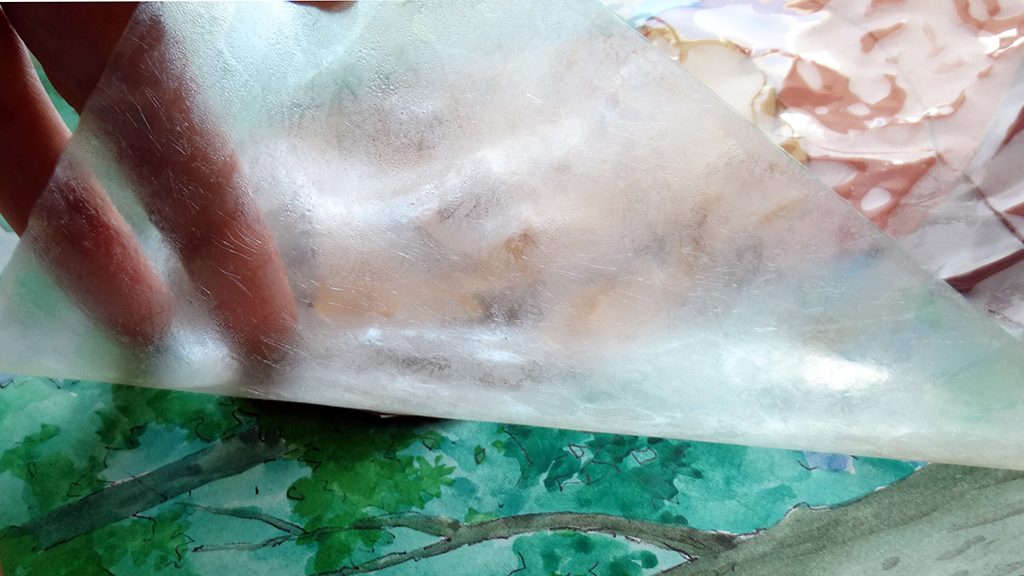
White crystals or white dots deposited
These whites crystal or dots are actually another visual symptom that the reaction of the vinegar syndrome has started. They are actually the plasticizer liquid contained inside the “plastic” layer that dried out and become this mineral salty grain look. They are, in fact, not just on the surface of the cel layer but inside it too.
We haven’t find any way yet to remove them completely though, but it exist some ways to reduce their visual appearance. And again these white dots means that the vinegar syndrome reaction already started on the cel.

How to know if my cel has the vinegar syndrome?
If your cel possess one or more of the symptoms explained previously well… your cel has probably reach the 2.5 phase or it will reach it in a very small period of time. It exist other visual symptoms of Vinegar Syndrome but they are pretty rare. Now to know it for sure and be able to measure it scientifically, you need a special laboratory machine that we possess.
What do I have to do if one of my cel smell vinegar?
The first thing to do is to take your contaminated cel and put it in quarantine. Like that, it will not spread out the vinegar syndrome to the others cels that are located in the same portfolio or close to it. So take this cel and place it in an other room, alone and far way from any other cels.

Then, you have to treat it! We have created a system that reset any cel to the phase 1 of the vinegar syndrome. This system (that took us more than 9 years of researches and development) is a special type a “climate control cabinet” of our creation, combining multiple features that we don’t normally find in an “all in one machine”. So we had to work closely with a specialized company that create custom laboratories cabinets to make this system possible. This system is capable of putting back the molecular stability of a cel for a very, very long time!
Vinegar Syndrome services
Vinegar Syndrome treatment
In our conservation facility, we can treat a cel that is affected by the vinegar syndrome. Our treatment will keep your cel in the best condition possible for a very long time!
Read more

